Nuclear Energy DefinitionThe creation of electricity by nuclear reactions is known as nuclear power. Nuclear energy can be generated by nuclear processes like nuclear fusion, nuclear fission, and nuclear decay. A great deal of the electricity used worldwide is currently produced by nuclear power reactors using plutonium and uranium fission. Applications of nuclear decay processes include radioisotope thermoelectric generators seen in various space probes, including Voyager 2. International research is still concentrated on using fusion power to produce electricity. 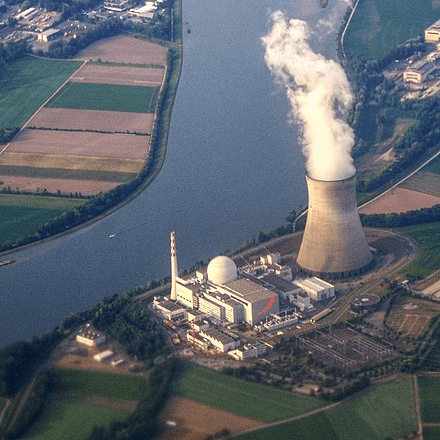
Enriched uranium and thermal reactors with single-cycle fuel are used in nearly every one of nuclear power plants. Fuel is removed once the ratio of neutron-absorbing atoms reaches a level at which the chain reaction can cease to persist, a process that typically takes three years. The spent fuel is then shipped to long-term storage after cooling in the locally used fuel pools for a while. Wasted fuel contains a lot of radioactive material despite its little volume. Even though its radioactive content is decreasing exponentially, it still needs to be kept isolated from the outside world for many thousands of years; however, newer technologies, like fast reactors, have had the potential to significantly reduce this. Since the used fuel still contains a significant amount of fissionable material, several nations (such as France and Russia) reprocess their spent fuel in order to separate the fissile and fertile components for use in new fuel. However, this process is more expensive than creating new fuel from uranium that has been mined. Because Pu-239 is the preferred material for nuclear weapons and is produced in small amounts in every reactor, reprocessing is viewed as a risk for the spread of nuclear weapons. In the 1950s, construction began on the first nuclear power plant. Global installed nuclear capacity increased significantly in the 1980s, rising to 300 GW by 1990, from 100 GW in the late 1970s. There's now more regulation and widespread opposition to nuclear power as a result of the tragedies at Three Mile Island in the United States of America in 1979 and Chernobyl in the former Soviet Republic in 1986. These factors and the high installation costs meant that by 2022, the amount of installed capacity had only increased to 390 GW. In 2019, these plants generated 2,586 terawatt hours (TWh), or about 10% of the world's total electricity production, making them the second-largest source of low-carbon energy after hydroelectricity. As of September 2022, there were 447 civilian fission reactors running, totaling 393 GW in power. With a total capacity of 62 GW and 96 GW, respectively, 57 of those were currently under development and 102 were planned. With an average capacity proportion of 92%, the largest fleet of nuclear reactors, located in the United States, generates about 800 TWh of pollution-free power each year. 89% is the average global capacity factor. In Asia, generation III reactors are now being built most frequently. Comparing nuclear power generation to other energy sources, it has one of the lowest rates of deaths per unit of energy produced. Each of these sources of energy has resulted in more fatalities per unit of energy owing to air pollution and accidents: coal, petroleum, natural gas, and hydroelectricity. No greenhouse emissions are released by nuclear power facilities. Nuclear power poses a number of risks, including the possibility of mishaps like the Fukushima nuclear tragedy in Japan in 2011. The use of nuclear power is under discussion. Nuclear energy is said to be a sustainable, risk-free energy source that lowers carbon emissions. The anti-nuclear movement argues that nuclear energy is more expensive and difficult to implement than alternative sustainable energy sources and that it poses numerous risks to people and the environment. History Of Its Origin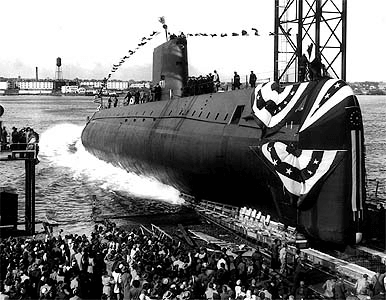
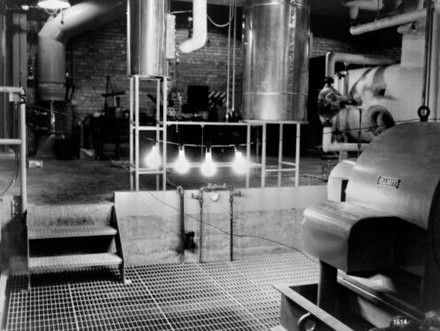
In 1938, nuclear fission was discovered after more than 40 years of research into the field of radioactivity and the development of new nuclear physics that explained the elements of atoms. It was quickly realized that a fissioning nucleus might cause more nuclei to fission, leading to a self-sustaining chain reaction, when the fission mechanism was discovered. When this was experimentally verified in 1939, scientists from several nations petitioned their governments to support nuclear fission research for the creation of a nuclear weapon as the world was about to enter World War II. The Chicago Pile-1, the first artificial nuclear reactor built in the United States, reached criticality on December 2, 1942, as a result of these scientific endeavors. The Manhattan Project, the Allied effort to manufacture atomic bombs during World War II, included the reactor's development. In order to produce weapons-grade plutonium for the first nuclear weapons, it prompted the construction of larger single-purpose production reactors. The atomic bombs of Hiroshima and Nagasaki happened one month after the United States conducted the first nuclear weapon test, known as the Trinity test, in July 1945. Despite the fact that the first nuclear weapons were military in nature, the 1940s and 1950s were marked by a high degree of optimism regarding the ability of nuclear power to provide cheap and limitless energy. On December 20, 1951, electricity was produced for the first time by a nuclear reactor at the EBR-I experimental station in Arco, Idaho, with an initial output of about 100 kW. Dwight Eisenhower, the president of the United States, stressed the urgency of developing "peaceful" uses of nuclear energy in his "Atoms for Peace" speech, which he delivered at the United Nations in 1953. The Atomic Energy Act of 1954 followed, allowing for the quick declassification of US reactor technology and encouraging private-sector research and development. Chernobyl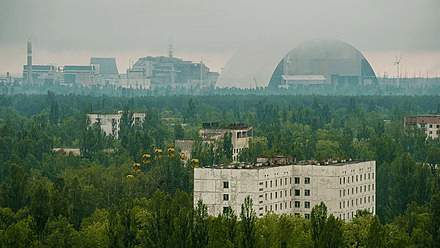
In the 1980s, a new nuclear reactor typically began operation every 17 days. Globally installed nuclear capacity surpassed 300 GW at the decade's end. The rate of new capacity additions has drastically decreased since the late 1980s, and in 2005, 366 GW of installed nuclear capacity was reached. The 1986 RBMK reactor related to Chernobyl nuclear power plant accident in the USSR changed the way nuclear power was developed and made it more important to follow global safety and regulatory guidelines. The cleanup and associated costs were projected to be 18 billion Rbls, making it the most expensive nuclear disaster in history both in terms of total casualties (56 direct deaths) and financial loss. The 1986 Chernobyl tragedy directly led to the formation of the World Association of Nuclear Operators (WANO), an international group that works to enhance safety awareness and the professional growth of nuclear facility operators. The number of new plants built in the years that followed was significantly reduced as a result of the Chernobyl tragedy. FukushimaAnother nuclear catastrophe put off the possibility of a nuclear renaissance. One of the biggest earthquakes ever recorded, the Thoku earthquake, which created a large tsunami, was the primary factor in the Fukushima Daiichi nuclear tragedy in 2011. Three core meltdowns occurred at the Fukushima Daiichi Nuclear Power Plant as a result of the emergency cooling system failing owing to a shortage of electrical supply. The most significant nuclear catastrophe since the Chernobyl tragedy happened as a result of this. Many nations reexamined their nuclear energy and safety policies as a result of the tragedy. Nuclear Power PlantsHeat power facilities, such as nuclear power plants, use the heat energy created during nuclear fission to produce electricity. Generally speaking, a fission nuclear power plant is made up of the following components: a nuclear reactor, where the nuclear reactions that produce heat occur; a cooling system, which removes the heat from the reactor; a steam turbine, which converts the heat into mechanical energy; and an electric generator, which converts the mechanical energy into electrical energy. Nuclear fission occurs when a neutron strikes the nucleus of an atom made of plutonium or uranium-235 and causes the nucleus to divide into two smaller nuclei. The reaction produces neutrons and energy. In order to start fresh fission events, which release additional energy and neutrons, the emitted neutrons can strike other uranium or plutonium nuclei. A chain reaction is what this is. The reaction rate is slowed down in the majority of commercial reactors by control rods that trap extra neutrons. Because a small percentage of the neutrons produced by fission are delayed, nuclear reactors can be controlled. Changes in reaction rates are slowed down during the interval between fission and the release of neutrons, and this interval also provides time for moving the control rods to modify the reaction rate. Fuel Cycle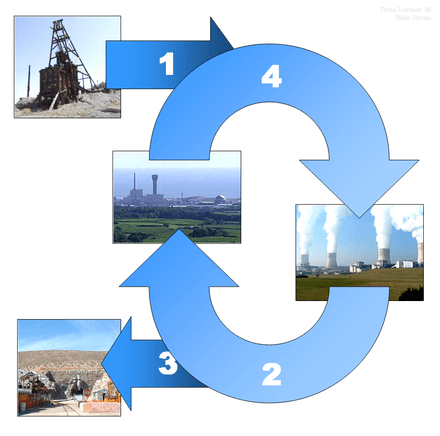
Uranium mining is the first step in the life cycle of nuclear fuel. To make the uranium ore easier to transport, it is subsequently transformed into yellowcake (U3O8), a compact ore concentrate form. Uranium-235, a fissile isotope of uranium, is often required for fission reactors. Uranium-235 makes up just around 0.7% of naturally occurring uranium. Depending on the neutron economy of the reactor, this natural uranium may be used as fuel. These reactors often feature heavy water or graphite moderators. This concentration is insufficient for light water reactors, which are the most prevalent type of reactor; as a result, uranium enrichment is required to raise it. Usually, uranium is enriched to 3.5-5% uranium-235 for use in civilian light water reactors. The uranium is then commonly transformed into uranium oxide (UO2), a ceramic, which is subsequently compressively sintered into fuel pellets, a stack of which makes fuel rods with the appropriate composition and shape for the specific reactor. The fuel's use will eventually become impractical as a result of the fuel's decreased fissile material and increasing fission products after some time in the reactor. The spent fuel will now be transferred to a spent fuel pool, which offers thermal heat cooling and ionising radiation protection. The spent fuel can be transferred to dry storage containers or reprocessed once it has been radioactively and thermally cooled down over a period of months or years. Effects on the Environment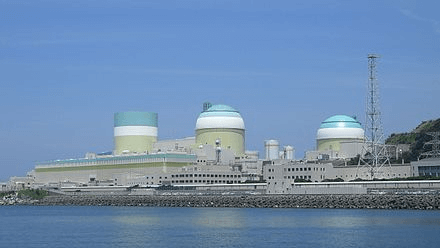
Nuclear energy can benefit the environment because it is a low-carbon energy source that requires nothing in the way of additional land use. The mining and milling processes have an impact on the environment and demand a steady supply of large volumes of water. The risks associated with managing radioactive waste, such as groundwater contamination, risks for accidents, and risks for various forms of attacks on waste storage sites or reprocessing- and power plants may have the greatest potential negative effects on the environment. These risks also include transgenerational risks for nuclear weapons proliferation that may increase the likelihood that these weapons will be used in the future. As there have historically been few nuclear power plant disasters with documented reasonably significant environmental repercussions, these remain primarily risks. Carbon EmissionsWith total life-cycle greenhouse gas emissions per unit of energy produced that are on par with or lower than those of renewable energy sources, nuclear power is one of the most popular low-carbon electricity generation techniques. Nuclear power has the lowest embedded total life-cycle emission intensity of any commercial baseload energy source, with a median value of 12 g CO2eq/kWh, according to an Intergovernmental Panel on Climate Change (IPCC) review of the literature on carbon footprints from 2014, which found. In contrast, coal and natural gas emit 820 and 490 g CO2 eq/kWh, respectively. According to research, compared to coal-fired energy generation, nuclear reactors have prevented the release of 72 billion tonnes of carbon dioxide globally as of 2021. Radiations2.4 millisieverts (mSv/a) of natural background radiation are emitted worldwide on a yearly average. It varies from 1 mSv/a to 13 mSv/a, mainly dependent on the local geology. The average global increase in public exposure due to routine nuclear power station operations, including the nuclear fuel cycle, is 0.0002 mSv/a, according to the United Nations (UNSCEAR). Less than 0.0001 mSv/a of radiation is typically emitted from functioning nuclear power facilities to the nearby local population. For comparison, the typical dose to people who live within 50 miles of a coal power plant is over threefold higher, at 0.0003 mSv/a. The Chernobyl incident resulted in a typical initial exposure of 50 to 100 mSv over a short period of time to weeks for the most affected local inhabitants and male recovery workers. However, the remaining global legacy of the worst nuclear power plant accident in average exposure is only 0.002 mSv/a and is continuously dropping at the decaying rate, from the initial high of 0.04 mSv per person averaged over the entire population of the Northern Hemisphere in the year of the accident in 1986. Attacks and SabotageTerrorists might attack nuclear power plants in an effort to contaminate the neighbourhood with radioactive material. According to the 9/11 Commission of the United States, nuclear power stations were initially examined as prospective targets for the September 11, 2001, attacks. Given that spent fuel pools are less secure than reactor cores, an attack on one might have catastrophic consequences. Numerous short-term deaths and numerous long-term deaths could result from the discharge of radiation. The NRC conducts "Force on Force" (FOF) drills at least once per three years at all nuclear power plant locations in the US. In the United States, plants are surrounded by a double row of high, electronically monitored barriers. A sizable number of armed guards are on duty, patrolling the plant grounds. Because insiders can monitor security measures and find ways past them, insider sabotage is another danger. The observation and understanding of security flaws were essential for insider crimes to succeed. Indian Point Energy Centre in New York was destroyed by fire in 1971, causing damages of $5-10 million. Plant maintenance personnel were responsible for the arson.
Next TopicNucleic Acid Definition
|
 For Videos Join Our Youtube Channel: Join Now
For Videos Join Our Youtube Channel: Join Now
Feedback
- Send your Feedback to [email protected]
Help Others, Please Share










